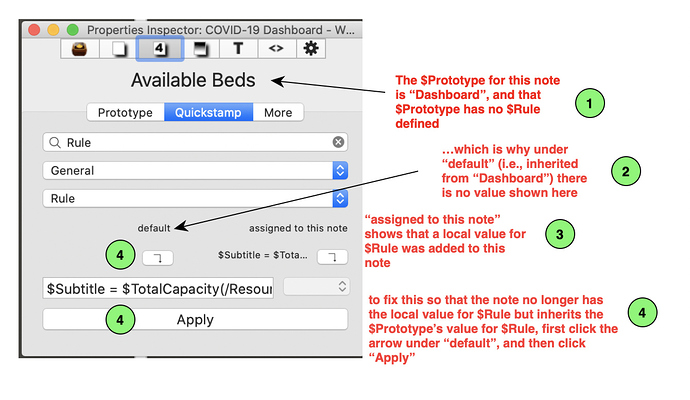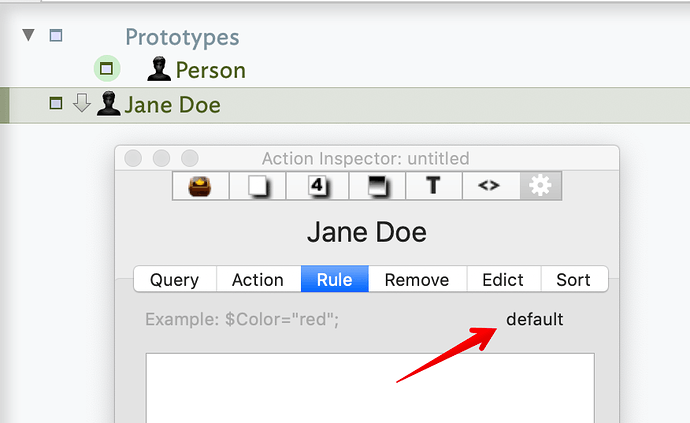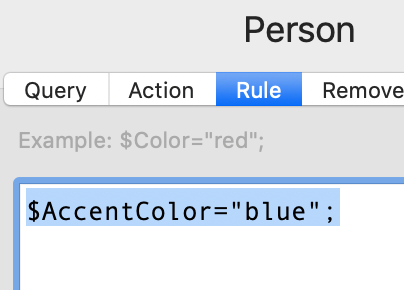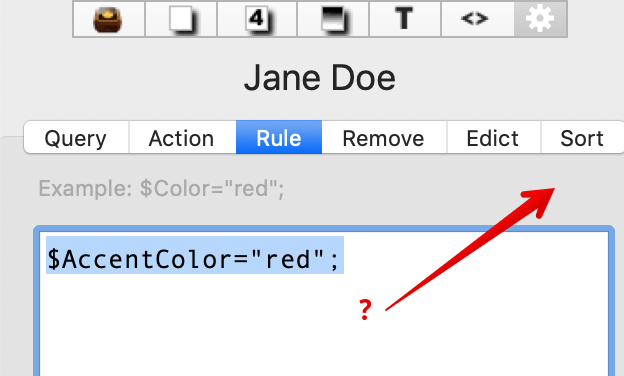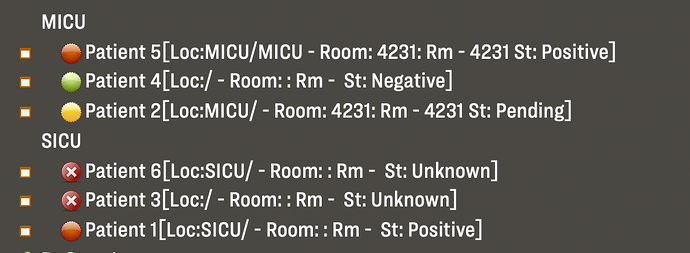Thank you Malcome (and Paul). I agree with both of you that I think the Cross-Tabs will be useful in this dashboard. I have to work more with this to understand. As I am working on this document, I am realizing there are more levels I should be thinking about. Let me see if I can outline these levels, and then also answer your question about current resources, patients and their needs.
As you see in the document (I am adding another update since I have begun to look at the idea from Tinderbox Way Summaries and Repeaters - still trying to figure out the correct rules to sum the children elements).
COVID-19 Dashboard - Working File.tbx (137.5 KB)
I am thinking about the following prototypes:
Patient
Room - with attributes - isNegativePressure, RoomNumber, Location (this would be SICU, MICU, 4S, etc). When A patient is assigned to a room, I would ‘drop’ a patent Note into the room (ie room would contain a patient).
Ward - Considering using an agent to ‘collect’ all Rooms that match Room.$Location with Ward.$Name. Then I could add additional attributes to calculate - Total number of rooms, Total occupied rooms would then be a sum of all children (rooms) that are occupied (ie have a child which is of type Patient).
Then would need a summary Agent (as I have now called Resources by Location) which would collect all the Wards and perform the calculations as I have them.
To answer your question - As we work through this Pandemic, the goal is to track our current capacity and that which remains. For example, by creating locations in the hospital (which I am calling Wards) and assigning the available rooms (these could be current physical rooms or other locations that have been converted to rooms to address the needs of the surge). I would then be able to display the current capacity as well as the number of occupied rooms. I would ultimately look at setting some criteria, maybe using text color, to indicate when we are reaching capacity (for example change color to Orange when we are at 80% filled and Red when we reach 100%). In addition, we would need to track limited resources as well, such as Ventilators. I will likely create notes to hold total available ventilators and then reference this to determine remaining ventilators (by summing each patient note where isIntubated == true).
I hope this makes sense. I am not sure if this is the right way to proceed with laying this out or not so any feedback is appreciated.
I am having trouble with getting the numbers to work out. For example, if you look at this latest document I liked in this reply, The Note Available Beds (currently lists 64) but this should be 62 (68 Total Beds - 3 used in SICU - 3 used in MICU). Not sure why this Rule is not working as I have it??
Thanks again, let me know if what I communicated makes sense.
Don


